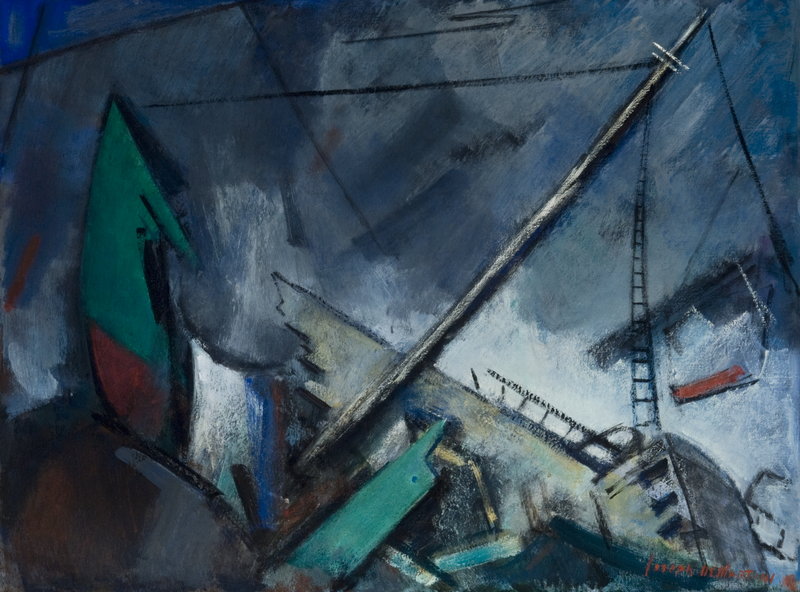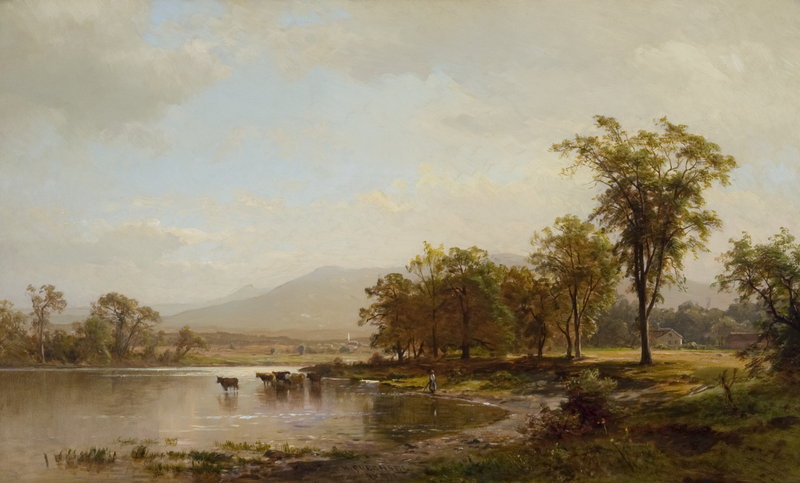We’re stodgy in Maine, and we know it. We might even be proud of it. Change comes hard, and often not without kicking and screaming.
But this change is all for good.
At 6 p.m. Wednesday, Rob and Annette Elowitch and their Barridoff Galleries will hold their annual art auction of American and European art. The event is an A-list affair, a true highlight of the summer art scene in Maine.
But this year, it’s happening in the spring, it’s at Maine College of Art, and it’s no longer an annual event. This will be the first of two auctions hosted by Barridoff this year, which actually is a return to the way things used to be long ago.
“We wanted our summers back,” Rob Elowitch said, noting that the second Barridoff auction will be in October.
The move to the Institute of Contemporary Art at MECA is a major change.
The gallery offers a far more intimate setting than Holiday Inn by the Bay, and should give the event a more hip, urban feel. The move pumps energy into the auction, which has felt a little less vibrant in recent years, in part because so many people now bid online or by phone and bypass the opportunity to attend in person.
But the truly noteworthy aspect of this year’s auction is the preponderance of contemporary art. Modern and contemporary art have become the forefront of the commercial art world over the last few years, Elowitch said.
“I was in New York a few months ago, and the galleries specializing in earlier art were far less busy than those handling late-20th century and contemporary work,” he said. “That has begun to change with the recent sense of an improving economy and art scene.
“But the fit for us just felt right from the very start. And we also got a number of excellent later pieces directly as the result of the new location, a Larry Koons ‘Balloon Dog Red,’ for example.”
The centerpiece of Wednesday’s auction is John Day’s collection of 20th-century Monhegan artists. Day is a local teacher, collector and director of the Pace Gallery at Fryeburg Academy in western Maine. He is a beloved figure in the Maine art world, and this collection stands as a definitive survey of modern painters associated with Monhegan, Elowitch said.
“There are certainly flashier collections, but none that seem to me to be at the core of what Monhegan is all about,” he said. “Most pieces were purchased from the artists, their wives or their estates — much of it during or after conversations about the work. The earlier artists like Kent and Bellows are household names. For the most part, the later artists are not. Not yet.”
These are not romantic images of the Maine coast, but modern expressive works that have in common the artists’ bond to Monhegan.
“That’s part of the reason I don’t mind seeing some of John’s collection going out of state,” Elowitch continued. “Maine was and is the host, but Monhegan artists literally and symbolically belong to the world. Where would Maine’s position in art history be if its art had been cloistered here? ‘Where would the country’s be?’ might well be the more important question.”
Interest in the Day collection is widespread, and it is likely that the collection will be scattered here and there after Wednesday, though surely a large chunk will be concentrated among Maine collectors.
Less certain is the outcome of another key component of this auction. Six oils by Charles Codman, owned by First Parish Church, are being sold to raise money for restoration of the church steeple. Codman was a Portland painter and a contemporary of Thomas Cole, founder of the Hudson River School.
These paintings were originally painted on the wooden panels from the church pews salvaged by the artist after a fire. The panels had been on loan to the Portland Museum of Art for many years, and included in the 2002 PMA exhibition “Charles Codman: The Landscape of Art and Culture in 19th Century Maine.”
They are among the finest Codmans that Barridoff Galleries has offered, Elowitch said.
A few years ago, museums statewide banded together to ensure the purchase of the banners of the Maine Charitable Mechanics Association so they would remain in Maine.
It would be a shame if the Codmans were broken up and dispersed. They belong in Maine — indeed, they belong in Portland.
Elowitch is cautiously optimistic they will stay here.
“These are apt to remain here in Maine because, although part of the collections of several major American museums, Codman is far more well known and collected in Maine” than elsewhere, he said.
Here’s hoping.
Staff Writer Bob Keyes can be contacted at 791-6457 or:
bkeyes@pressherald.com
Twitter: pphbkeyes
Send questions/comments to the editors.




